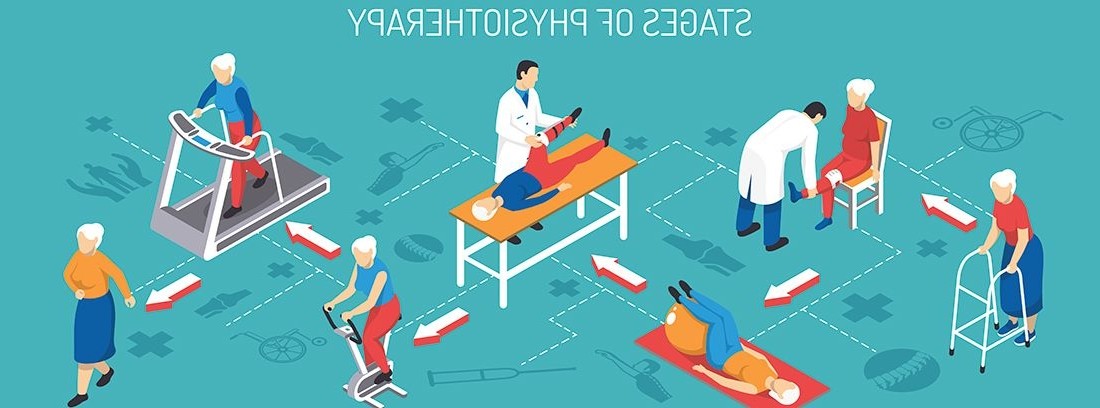How does a physical therapist help you?

What skills does a physical therapist have?
The physiotherapy is a university degree discipline where health professionals with anatomical knowledge and human physiology are trained, the physiotherapist. They are specialized in the treatment of conditions through different manual therapies, therapeutic exercise and physical agents such as heat, cold, light, water, electricity, etc. All together, the objective of maintaining and restoring the functional capacities of patients and improving their quality of life. A physiotherapist he is capable of making his own diagnosis in physiotherapy with the execution of manual tests at the muscular, neural or articular level and to guide an optimal treatment for the patient. However, they also work with other health professionals, such as doctors, nurses, occupational therapists or psychologists, forming part of an interdisciplinary team.
Where can we find a physiotherapist and what are their skills?
The physiotherapists They are responsible for preventing injuries, educating patients in the health field and rehabilitating acute or chronic conditions. Day-to-day is receiving patients referred from family doctors or specialists such as traumatologists, rheumatologists or neurologists. They work both in the private and public spheres, in a wide range of places such as clinics, outpatient clinics, hospitals, nursing homes, gyms, sports clubs, etc ... The main objectives of a physical therapist They are: preventing, curing and alleviating musculoskeletal problems in a physical way and trying to minimize and repair the damage as much as possible. Physiotherapy intervenes on three levels:
- Prevention, education and empowerment.
- Process healing.
- Treatment of chronic pathology or processes.
It is common to refer or go on your own to the physiotherapy service when suffering from a musculoskeletal disease or condition. It is a service highly demanded by patients with trauma or rheumatological problems such as arthritic processes, neck pain, fractures, sprains, fibrillar ruptures, among others. However, as mentioned above, the intervention in physiotherapy has gradually opened up to other specialties, so that today, a physiotherapist must have basic skills in:
- Traumatology and Rheumatology: osteoarthritis, fractures, sprains, capsulitis, etc.
- Pediatrics: sensory-motor development problems secondary to congenital diseases, bronchiolitis, cystic fibrosis, etc.
- Urogynecology: dysfunctions of the urinary and reproductive system, pelvic floor, pre and postpartum, etc.
- Sport: and readjustment to sport.
- Geriatrics: maintaining and promoting the autonomy of the elderly through exercise and prevention of falls.
- Neurology: stroke, spinal cord disease, aphasia, etc.
- Cardiorespiratory rehabilitation:), pulmonary emphysema, respiratory deficiencies secondary to degenerative pathologies, cardiovascular problems, obesity, etc.
- Research: carry out studies based on scientific evidence where the methodology of physiotherapy techniques or treatments for different conditions is tested.
What is the procedure when I am referred to the physical therapist?
When the patient arrives for the consultation physiotherapist, Referred by a doctor, or on your own, the first day corresponds to the first visit of the patient. It is the first contact between the patient and the specialist, in which the condition is evaluated and the best treatment is prescribed. During the initial interview, reports and diagnostic tests performed, antecedents or pathologies of interest are discussed, activities of daily living (ADL), habits, hobbies, etc. are analyzed.
Subsequently, tests are carried out to evaluate the mobility, muscular strength and flexibility of the affected limb, in addition to specific discriminatory manual tests to locate or confirm the injury. Once the evaluation is finished, a treatment is prescribed that will include manual techniques (massage therapy, inhibition of the trigger point, dry needling, stretching, joint manipulations, etc.), electrotherapy, which is based on the application of analgesic currents or magnetotherapy to reduce the inflammation and a regimen of therapeutic exercises, with the aim of progressively recovering full functionality.
The importance of a good diagnosis in physiotherapy is essential, since it will also help us to determine if it is a patient that we can treat or if, on the contrary, we should refer you to a specialist doctor.
- A physiotherapist is able to make his own diagnosis in physiotherapy through manual tests at the muscular, neural or joint level and guide an optimal treatment for the patient.
- The main objectives of physical therapists are: to prevent, cure and alleviate musculoskeletal problems physically and trying to minimize and repair the damage as much as possible.
- It is a service highly demanded by patients with trauma or rheumatological problems such as arthritic processes, lumbar pain, cervical pain, fractures, sprains, and fibrillar ruptures, among others.
(Updated at Apr 14 / 2024)